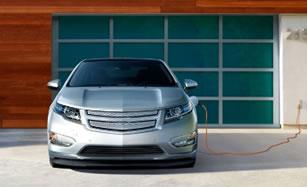Explaining Electric & Plug-In Hybrid Electric Vehicles
Considering an electric vehicle? Or just want to learn more about them?
Electric vehicles (EVs) have a battery instead of a gasoline tank, and an electric motor instead of an internal combustion engine. Watch this video to learn how electric vehicles and different types of plug-in hybrid electric vehicles work.
Here are a few additional points to consider:
- Emissions: EVs produce no tailpipe emissions. While charging the battery may increase pollution at the power plant, total emissions associated with driving EVs are still typically less than those for gasoline cars—particularly if the electricity is generated from renewable energy sources like wind. To estimate the greenhouse gas emissions associated with charging and driving an electric vehicle where you live, click on the following link:
- Charging: Depending on how far you drive each day, you may be able to meet all of your driving needs by plugging in only at night. Most EVs can be charged with a standard 120 V outlet. To charge the vehicle more quickly, you may want to install a dedicated 240 V outlet or charging system. You may also be able to plug in at your workplace, or at one of the growing number of public charging stations.
- Driving Range: The number of miles an EV will travel before the battery needs to be recharged may be significantly less than the distance your gasoline car can travel before being refueled. Find the driving range and charge time for EVs on the Fuel Economy and Environment Label or at fueleconomy.gov.
What about plug-in hybrid electric vehicles (PHEVs)? 
Like electric vehicles, plug-in hybrid electric vehicles (PHEVs) have a battery and an electric motor. But as in gasoline vehicles, PHEVs also have a gasoline tank and an internal combustion engine. Some PHEVs operate exclusively, or almost exclusively, on electricity until the battery is nearly empty. Then gasoline is burned in the engine to provide additional power. Other PHEVs—sometimes called “blended mode” PHEVs—use both gasoline and electricity to power the vehicle while the battery is charged.
- The Fuel Economy and Environment Label shows the driving range and charge time for a PHEV.
- The Department of Energy My Plug-in Hybrid Calculator and
The University of California, Davis EV ExplorerExit can help you determine if a PHEV is right for you. Compare different vehicles to get yearly fuel costs customized to your commute, frequency of travel, and charger access. - You can find information for specific PHEV models at fueleconomy.gov.
